
Inhaling Fungi Increases Horses’ Risk of Inflammatory Airway Disease
Management strategies include inhaled corticosteroids and environmental changes such as steaming hay.


Management strategies include inhaled corticosteroids and environmental changes such as steaming hay.

Factors that contribute to a breeder’s likelihood of getting a live foal using intracytoplasmic sperm injection.

Two leading genetics researchers described current and upcoming tests for a variety of heritable equine conditions.

Dr. Regina Turner shared her favorite breeding-related studies on topics ranging from foaling prediction to estrus suppression.
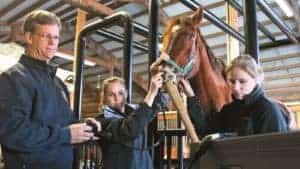
From available treatments to feeding strategies, attendees and moderators discussed approaches for managing squamous and glandular gastric disease.

Manufacturers have begun developing portable ECG devices vets can use and interpret with smartphone apps. A research team tested them, and here’s what they found.
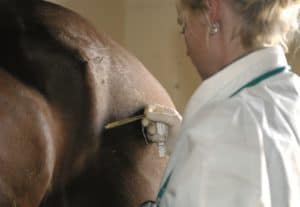
The FDA recently approved dipyrone to address fever in horses with respiratory infections.

A Penn Vet researcher compared inflammation markers in imported and U.S. native horses with the goal of distinguishing mild vaccine reactions from actual disease in horses new to the United States.

One manufacturer organized a roundtable of English and Western sport horse practitioners to evaluate their use of bisphosphonates.

Since hitting the commercial equine market in 2014, bisphosphonates have been used primarily to manage horses with navicular disease. One veterinarian describes how they impact navicular region pain and lameness.

A thorough PPE on off-track Thoroughbreds can pay dividends both now and years into the future of the horse’s second career.
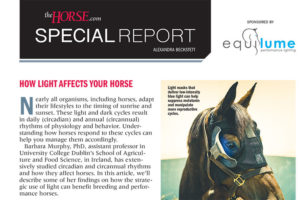
Nearly all organisms, including horses, adapt their lifestyles to the timing of sunrise and sunset. From breeding to performance to haircoats—understanding how horses respond to light can help you manage them accordingly.

A horse’s active competition schedule can make managing and treating respiratory problems challenging.
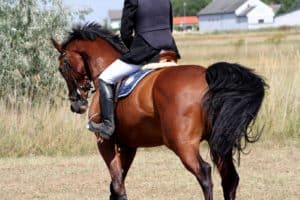
Saddles with trees that are too narrow or too wide can reduce range of motion in horses’ backs, a study found.

As concerns over antibiotic resistance grow, equine veterinarians look for ways to treat wounds without reaching for these powerful drugs. Here are some of their options.
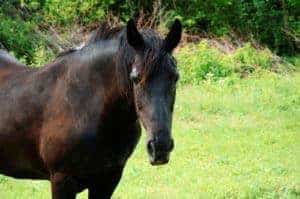
Horses experience less profound immune system changes than humans as they get older. However, researchers still have much to learn about equine aging.
Stay on top of the most recent Horse Health news with